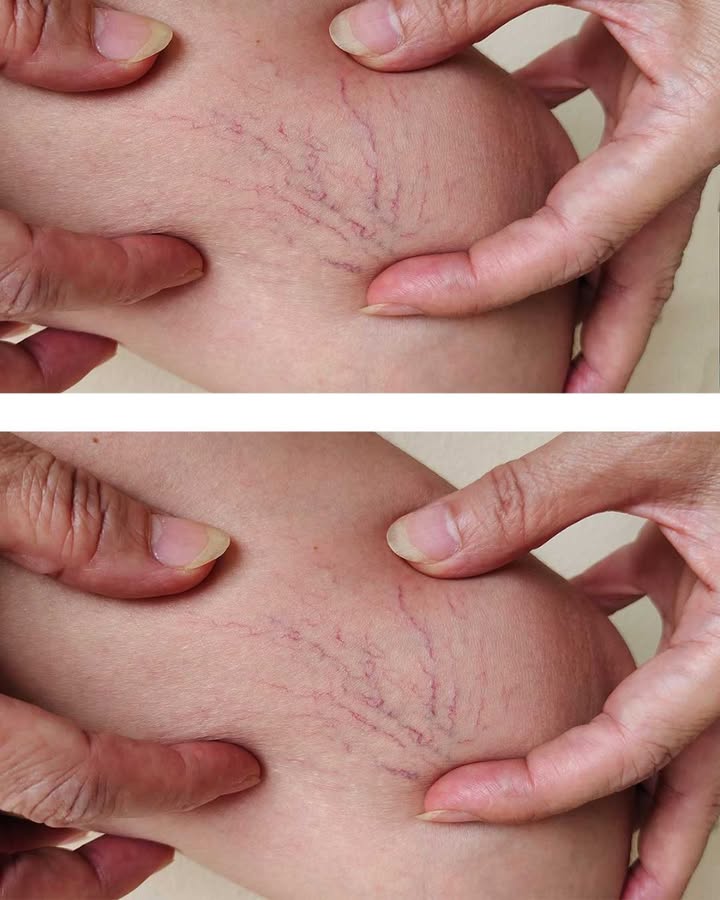These red veins are spreading on my thighs. Doctor’s appointment is far away. What can I do in the meantime?
Georgia Lynn
Contributing Writer
Spider veins, also known as telangiectasia, are small, dilated blood vessels that appear near the surface of the skin. They are often red, blue, or purple and can resemble a spider web or tree branches. Spider veins are most commonly found on the thighs, calves, and ankles. They occur when the valves in the veins weaken or become damaged, causing blood to pool and the veins to enlarge. Factors contributing to the development of spider veins include genetics, hormonal changes, prolonged standing or sitting, obesity, and sun exposure. Symptoms may include a mild aching or burning sensation, especially after standing for long periods.
Immediate Steps to Manage Spider Veins at Home
While waiting for your doctor’s appointment, there are several steps you can take to manage spider veins at home. Elevate your legs whenever possible to reduce pressure on the veins. Avoid standing or sitting for extended periods; take breaks to walk around and stretch your legs. Wear compression stockings to improve circulation and reduce swelling. Apply cold compresses to the affected area to alleviate discomfort. Gentle massage can also help improve blood flow and reduce symptoms. Ensure you maintain a healthy weight to minimize pressure on your veins.
Lifestyle Changes to Prevent Further Development
To prevent the development of additional spider veins, consider making some lifestyle changes. Regular exercise, such as walking or swimming, can improve circulation and strengthen your veins. Maintain a healthy diet rich in fiber and low in salt to prevent constipation and reduce pressure on your veins. Avoid wearing tight clothing that can restrict blood flow. Protect your skin from excessive sun exposure by using sunscreen, as UV rays can weaken the skin and veins. If your job requires prolonged standing or sitting, try to change positions frequently and take breaks to move around.
Over-the-Counter Treatments and Remedies
Several over-the-counter treatments and remedies can help manage spider veins. Topical creams containing ingredients like retinoids or vitamin K may improve the appearance of spider veins. Horse chestnut extract is a popular herbal remedy believed to strengthen vein walls and reduce swelling. Arnica gel can be applied to alleviate pain and inflammation. Be sure to follow the instructions on these products and consult with a pharmacist if you have any concerns. While these treatments may not eliminate spider veins, they can help reduce symptoms and improve appearance.
